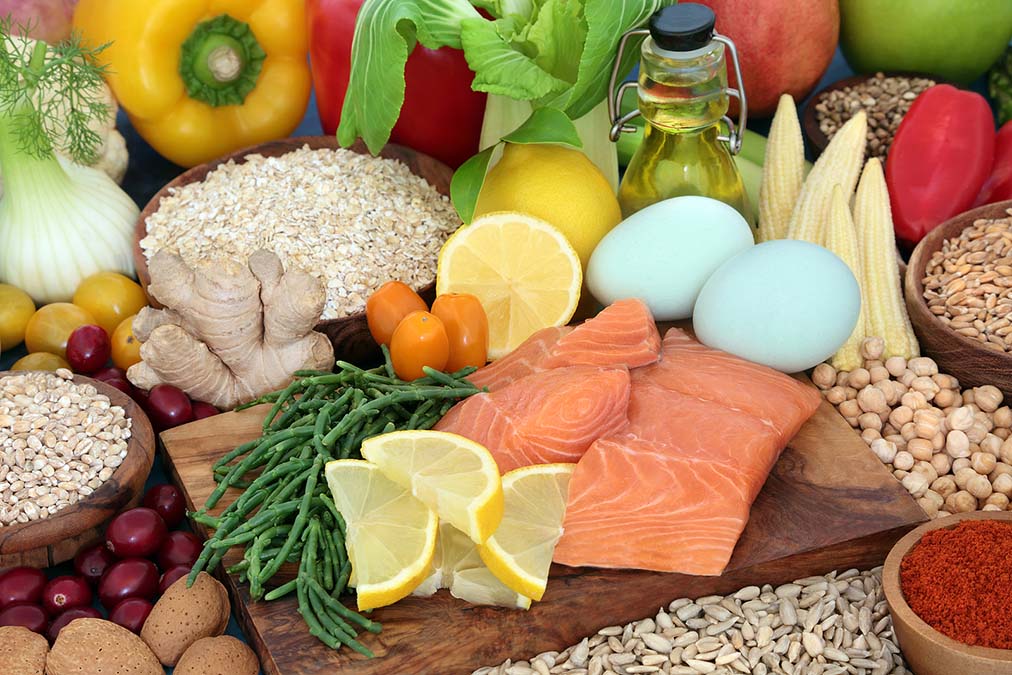 You may have been told to cut down on salt, fat, sugar, and other “unhealthy” ingredients to lower your blood pressure.
You may have been told to cut down on salt, fat, sugar, and other “unhealthy” ingredients to lower your blood pressure.
Instead, you’re forced to load your dish with greens and fruits, and maybe take some herbs or supplements.
But one ingredient—which could be the key to curing high blood pressure—has been almost completely ignored until now.
And there’s at least an 85% chance that you’ll jump up and down with joy after reading about this popular ingredient that you should load into your diet.
According to recent evidence, the sources of protein in your daily diet might be the missing link to preventing and reducing high blood pressure.
Point-for-point on the blood pressure scale, the benefits obtained from protein are on par with lifestyle factors, such as exercise and the DASH diet.
The Protein-Blood Pressure Connection
Your artery walls, as well as the muscles that line them and allow them to expand and contract, are made of protein. As it turns out, certain amino acids (the building blocks of protein) are more important than others when it comes to building strong arteries.
A study of 2,000 women has found that those who consumed more than seven of the amino acids known to be heart-protective had lower blood pressure levels and more flexible arteries than the cohort who consumed less of these amino acids.
Scientists found that participants eating diets high in vegetable protein had lower pressure in the main artery that was closest to the heart—a useful indicator of how hard the heart has to work to push blood through the body. By contrast, certain animal-derived amino acids were found to make the arteries suppler.
The bottom line is that the best diet for healthy blood pressure, according to these researchers, is one that emphasizes lots of plant foods along with moderate amounts of lean meat. So let’s take a look at the seven amino acids that were used in this study, how they lower blood pressure, and the foods in which they are found.
A Closer Look at What These Seven Amino Acids Do
Glutamic acid, arginine, cysteine, glycine, and histidine all raise levels of nitric oxide, a potent blood vessel dilator.
Cysteine is also a component of the antioxidant glutathione, which decreases oxidative stress on arteries and improves insulin resistance. This keeps arteries healthy and helps prevent high blood pressure by preventing high blood sugar.
Additionally, glycine contributes to the structure of collagen and elastin, two proteins that make the walls of your arteries both flexible and expandable.
Leucine lowers blood pressure by decreasing fat production and increasing muscle mass.
Tyrosine is converted into the nerve-stimulating neurotransmitter epinephrine, also known as adrenaline. Although adrenaline raises blood pressure temporarily, its overall effect is to lower resting blood pressure.
These foods are good sources of these amino acids:
• Glutamic acid – Plant sources of glutamic acid may be even more effective than animal sources at lowering blood pressure. According to one study, a meal containing pea protein results in higher nitric oxide levels than a meal based on egg whites. Good sources of glutamic acid include salmon, chicken, soy, and sesame seeds.
• Arginine – Fish, chicken, mung bean sprouts, chocolate, and wheat germ are all excellent sources of arginine.
• Cysteine – Foods high in cysteine include ground mustard seed, cod, soybeans, sunflower seeds, and legumes.
• Glycine – Present in fish, meat, beans, nuts, and dairy.
• Histidine – Calms the nervous system and puts you in a relaxed mode. Found in high quantities in meats, soy, fish, nuts, whole grains, and seeds.
• Leucine – This branched-chain amino acid is famously present in whey protein (a byproduct of cheese production) and is a favorite of athletes and people seeking to lose weight. Dairy products, soybeans, beef, pumpkin seeds, tuna, and peanuts are good sources of leucine.
• Tyrosine – Good sources of tyrosine include seaweed, egg whites, cottage cheese, turkey, and mustard greens.

 Overcoming IBD
Overcoming IBD Multiple Sclerosis
Multiple Sclerosis Banishing Bronchitis
Banishing Bronchitis Gum Disease Gone
Gum Disease Gone Overcoming Onychomycosis
Overcoming Onychomycosis Neuropathy No More
Neuropathy No More The Prostate Protocol
The Prostate Protocol Brain Booster
Brain Booster
 Ironbound
Ironbound
 Solution for Shingles
Solution for Shingles
 The Bone Density Solution
The Bone Density Solution
 The Ultimate Healing Protocol
The Ultimate Healing Protocol
 The Parkinson's Protocol
The Parkinson's Protocol
 The Chronic Kidney Disease Solution
The Chronic Kidney Disease Solution
 Overthrowing Anxiety
Overthrowing Anxiety The Fatty Liver Solution
The Fatty Liver Solution The Hypothyroidism Solution
The Hypothyroidism Solution
 The End of Gout
The End of Gout The Blood Pressure Program
The Blood Pressure Program
 The Oxigized Cholesterol Strategy
The Oxigized Cholesterol Strategy
 Stop Snoring And Sleep Apnea Program
Stop Snoring And Sleep Apnea Program
 The Arthritis Strategy
The Arthritis Strategy The Vertigo & Dizziness Program
The Vertigo & Dizziness Program The 3-Step Diabetes Strategy
The 3-Step Diabetes Strategy Hemorrhoids Healing Protocol
Hemorrhoids Healing Protocol The Erectile Dysfunction Master
The Erectile Dysfunction Master Weight Loss Breeze
Weight Loss Breeze The IBS Program
The IBS Program The Insomnia Program
The Insomnia Program The Migraine and Headache Program
The Migraine and Headache Program The Neck Pain Solution
The Neck Pain Solution The Menopause Solution
The Menopause Solution The Ejaculation Master
The Ejaculation Master The TMJ Solution
The TMJ Solution The Acid Reflux Solution
The Acid Reflux Solution The Fibromyalgia Solution
The Fibromyalgia Solution The Psoriasis Strategy
The Psoriasis Strategy